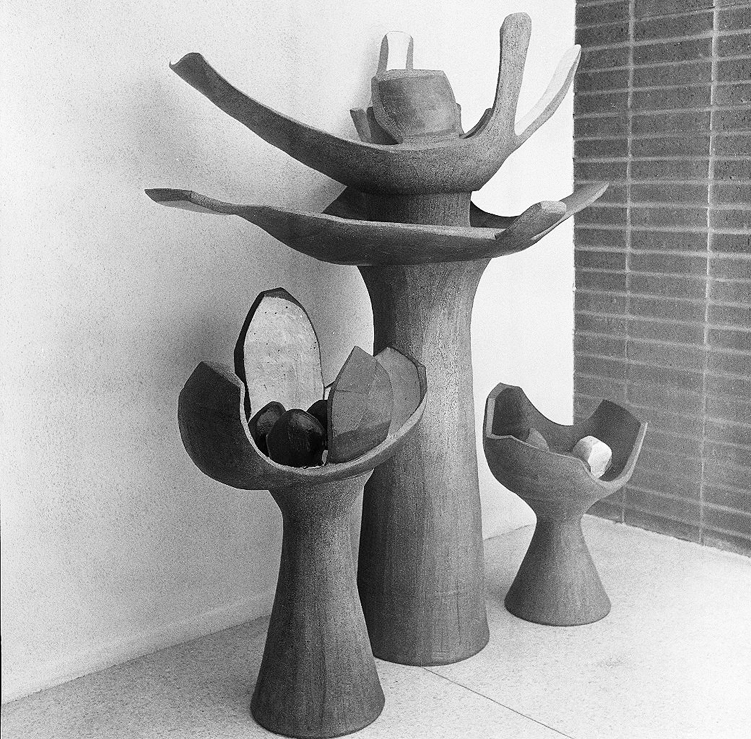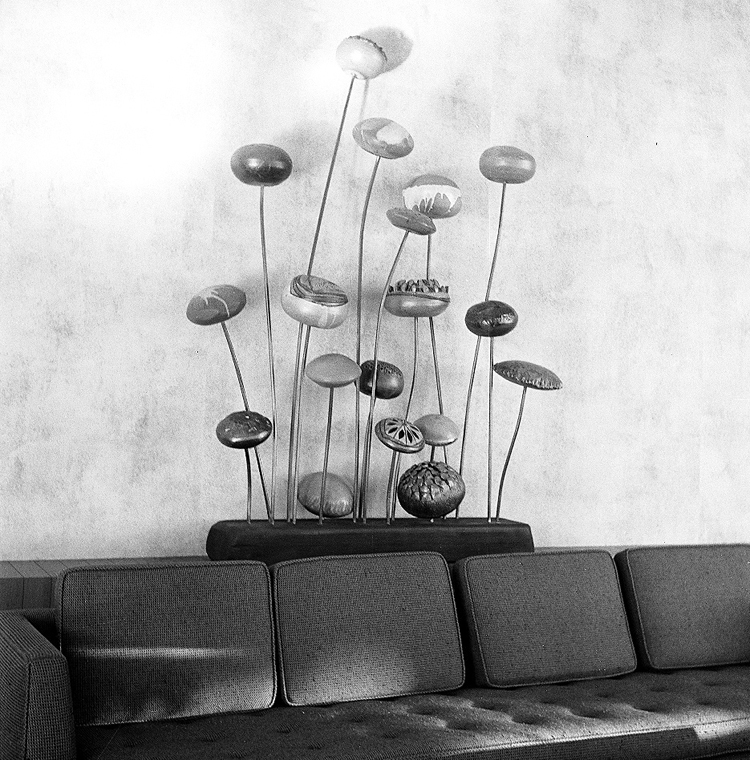Grand Guru of Clay - Page 2
 |
|
|
 |
|
|
 |
|
|
 |
 |
|
|
More than a bon vivant, however, Coronel was a serious potter whose work veered from wheel-thrown pots and bottles to commercial lines of handmade ashtrays, bowls, hanging lamps, planters, and residential wall screens. He did wall murals of clay, some for children's bedrooms, others for corporate spaces.
And on top of that he did sculpture, much of it abstract—though he was not averse to the occasional bust or figurative work.
Coronel began painting as a child and still paints today. He has designed jewelry for himself and Lee, as well as fabrics and metalwork. But ceramics has always been his favored medium because, he says, of "the act itself—just touching clay."
"The minute I [first] touched the clay," he recalls, "it was seduction, immediate seduction."
Yet despite Coronel's fame and his financial success, for decades his work was forgotten.
When Michael Hickman, a painter, potter, and a knowledgeable collector, found a wonderful pot at a thrift store ten years back, he knew it was worth far more than the $10 asking price. But all he knew about the pot's genesis was the name 'Raul' incised on the bottom.
Raul who?
"I became obsessed with him," says Hickman, who has since become a friend. A little sleuthing found a photo of a man identified as 'Raul Coronel' standing next to the ceramic artist Peter Voulkos, and Hickman found Raul's name in ceramic association literature.
Hickman began buying Coronel's pots and sculptures—he owns about 30 today—and started an online forum publicizing the work. Dealers took notice, collectors too.
Looking to buy a Coronel piece today? It'll cost you more than $10.
"His designs, they astound me with their creativeness," Hickman says. "I think he's a great artist," he adds. "There are differences of opinion on that. I think he is one of the most important mid-century modern artists and designers."
Raul Coronel may have been rediscovered—but mysteries remain. Most obviously, why had he dropped out of the historical record? And, perhaps most compellingly, how many other designer-craftsmen and women of his generation have likewise been forgotten?
And who are they?
There are these questions too: What has happened to one major portion of Coronel's legacy, his architectural installations? That work ranged in setting from private homes and gardens to institutional and commercial buildings, and in type from ceramic murals to fountains and more.
But let's start at the beginning, in the 1930s, in a small boy's bedroom in Ensenada, Mexico. Raul is suffering from what would become a lifetime of insomnia, listening in bed to an American radio station playing classical music—and picking up some English while doing so.
Coronel, who was born in 1926 in Mexicali, comes across today as easygoing and affable. Longtime friend Suzanne Faulkner describes him as "very kind, very gentle." But he has no good words to say about his parents, who mistreated him and divorced when he was young, or the grandmother who adopted him.
As he tells the tale, though, he made the most of his childhood, earning cash by painting portraits of neighbors, doing well in school, learning more English from aunts who had married Americans and lived across the border.




